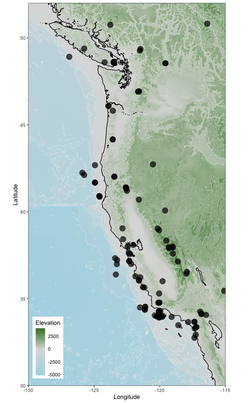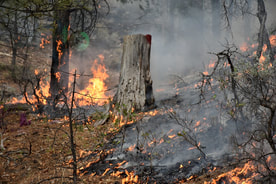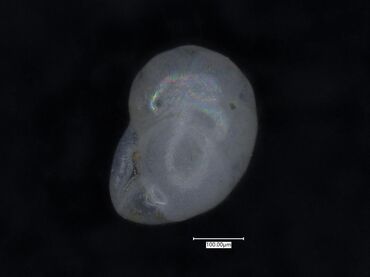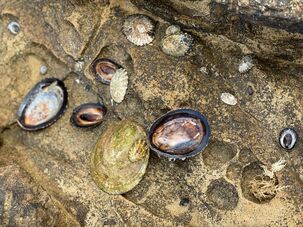Holocene climate and oceanography of the Western United States and California Current System
Check out the paper in Climate of the Past here and read/listen to the articles below for additional context!
|
Geochemical tracing of wildfire: implications for paleofire reconstruction and wildfire pollutant distributionQuantifying the relative impact of climate change, fuel sources, and fire management in determining fire frequency and severity remains a critical research question. Novel geochemical charcoal analysis techniques now make it possible to quantify the relative temperature and intensity of a fire. In this work, I aim to identify the impacts of wildfire intensity and fuel type on geochemical signatures of pyrogenic carbon following wildfires in California. |
Ocean oxygenation through the HoloceneModern climate change is causing expansions of low oxygen zones, with detrimental impacts to marine life. To better predict future ocean oxygen change, I study past expansions and contractions of low oxygen zones using microfossils of seafloor organisms (including foraminifera). This work included both spatial analysis in the modern to understand relationships between community assemblages and spatial hydrographic gradients and temporal analysis to identify changes in the oxygen minimum zone through time.
Palmer, HM., Hill TM, Roopnarine PR, Myhre SM, Donnefield JT, Reyes, KR. Southern California margin benthic foraminiferal assemblages record recent centennial-scale changes in oxygen minimum zone. Biogeosciences. 03 June 2020. Vol 17, 2923–2937. DOI: 10.5194/bg-17-2923-2020. Palmer, HM., Hill, TM., Kennedy, E., Roopnarine, PD., Langlois, S., Reyes, KR., and Stott, L., Ecological and Environmental Stability in Offshore Southern California Marine Basins Through the Holocene. Paleoceanography and Paleoclimatology. 2022. |
Understanding nearshore-offshore oceanographic change through timeTo fill a knowledge gap in linking nearshore-offshore oceanography, I collaborated with researchers at the California Academy of Sciences and University of California Museum of Paleontology to build a database of published oxygen and carbon stable isotope measurements from nearshore molluscs along the coast of the Northeast Pacific through the Holocene (Palmer et al., 2021, PANGEA). This novel database provides multi-site, seasonal archives of nearshore conditions and can test geochemical questions across ecological, spatial, temporal, and taxonomic gradients (Palmer et al., 2021, In review). Palmer, H. M., Padilla Vriesman, V., Banker, R. M., & Bean, J. R. (2022). Compilation of a database of Holocene nearshore marine mollusc shell geochemistry from the Northeast Pacific. Earth System Science Data. Palmer, HM., Padilla Vriesman, V., Banker, R.M.W, Bean, J.R. (2021): A database of Holocene nearshore marine mollusc shell geochemistry from the Northeast Pacific. PANGAEA, doi.org/10.1594/PANGAEA.932671 |



